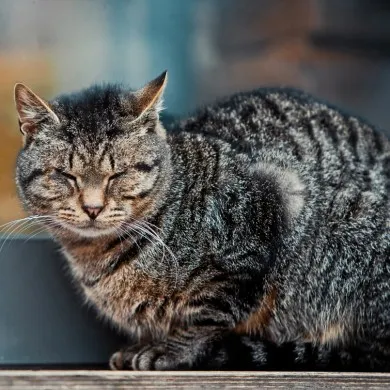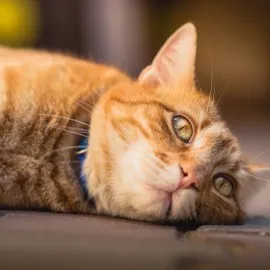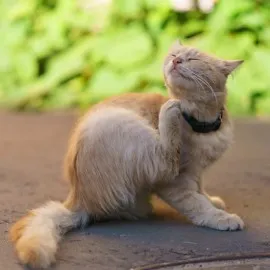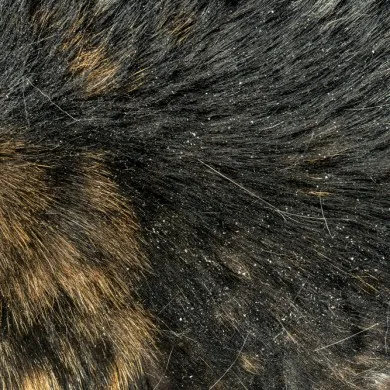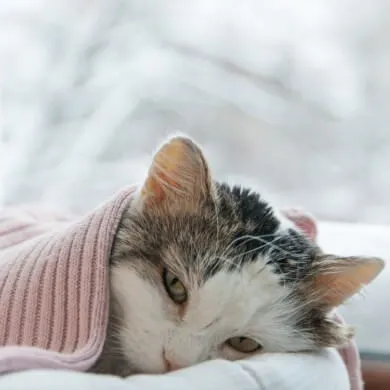They say that cats have nine lives. And though our feline companions have been worshipped in the past, they're far from invincible. All that jumping, rolling and flailing ends up taking its toll. The problem is, as an owner, it can be hard to determine if your cat has a problem. You can't exactly ask them yourself! And, if they do have a problem, how can you help? So, if you notice your cat limping, you're going to want to find out why. Here, we'll outline what might be causing them to limp, when you should be concerned about your cat limping, and what to do when you spot it.
What causes cat limping?
Knowing cats, their limp is likely the result of a little tumble or accident. Cats love jumping, often out of high windows when they can't easily determine the fall distance and adjust accordingly. Younger and older cats might not know how much strain their bodies can take and push themselves too far. A jump off a high shelf could be enough to cause problems.
Any failed jump might have strained the muscles in their legs. Or, they may have trodden on something sharp that's either lodged in their paw or done some damage. Alternatively, they could have an ingrown nail that's causing them discomfort. If your cat is limping, or avoiding using a specific paw, feel free to check and see if anything's amiss.
Wait until your cat is lying on its side, and carefully check their leg and paw for any swelling. If there is visible discomfort, for instance, if they try and pull away when you touch them or meow, there's probably a problem. You might even spot the wound immediately if the area is swollen or red.
And just like humans, cats can also suffer from arthritis later in their lives. Older cats can still get about, even if they're not as spritely as they were in their youth. So, if you notice your older cat isn't jumping around like they were yesterday or the day before, or you notice a decline in their activity, they may have arthritis. There are certain foods you could buy that support joint health. Or, you could try a supplement like Glucosamine & Chondroitin. Its all-natural formula is designed to specifically target the bones and joints, promoting normal mobility for cats of all shapes and sizes.
What to do if you spot your cat limping
The first thing you should do if you suspect your cat's limping is more serious is to book an appointment with your vet as soon as possible. Hopefully, they will be able to diagnose what's causing the limp, provide any appropriate medication or treatment materials, and advise you on what to do once your cat is in recovery.
In the meantime, if you're not able to see your vet within the first day or two, don't worry. There are a few things you can do to keep them safe and as comfortable as possible until their appointment.
- Try and limit their movement as much as possible. This is easier said than done, since cats are wandering beasts that don't like to be penned in. See if you can pick up a large crate that will fit all the essentials inside, like a litter tray, something to sleep on and a drinking bowl.
- Make sure they can easily get into the litter tray without raising their legs too far. It will only exacerbate the injury.
- Don't give any unprescribed medication to your cat. Only ever give it medication prescribed by a vet.
- Make sure you still spend time with your cat to keep them calm and happy enough, even while their freedom is stifled. Scratches, petting and cuddling, will never go amiss.
Journey to the vets
When it's time for your appointment, take it slow. Taking a cat to the vet can be tough at the best of times, so they might be less than receptive with an injury. When it's time to get them in the carry crate, maybe leave a toy and some treats in there to coax them inside. If your cat's having none of it, don't force them in. Try wrapping them up and lifting them in. Hopefully, you'll be prepped and on your way to the vets in no time!
Then, when it's time for their recovery, be as accommodating as possible. As per the above instructions, try to keep their movement limited while they get better. And throw in a few more treats for good measure!
And that's our guide for what to do if your cat is limping! We're sure they'll get better in no time. We'll have our fingers and toes crossed for you!

